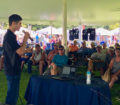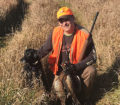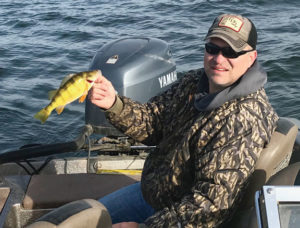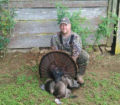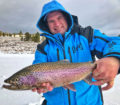By Steve Weisman
As we move into the month of August, perch fishing usually begins to take off on Big Spirit Lake. With a little luck, this bite will carry through the end of fall. When things are really going, you will see groups of boats all fishing a certain area. I have found this to be good and not so good. Often, perch are wanderers, so you can be on a school and suddenly they move on and you’ve got nothing beneath you. So now what? Do you wait for the perch to come back through or do you try to follow or go in search of another school. Sometimes those groups of boats are catching perch, but other times, they are just waiting and hoping the perch come back through.
On a lake the size of Big Spirit, it often seems daunting trying to locate the perch. After all, you’re looking at 5,684 acres, and if you only have a few hours to fish, then you have to go with the latest fishing report from the bait shops or friends who have been out and had some success. The more you go, the more you will be “on the bite”!
Where to start
Probably the first place to check out is the deep water or the mud. So, you will be looking at 18 feet or deeper. Now, that’s a lot of water to cover. One of my neighbors will actually start the day pulling crankbaits for walleyes. Invariably, he will run across active perch that will attack the crankbait. Multiple hits will mean you most likely have a school of aggressive perch.
If you are going to try this strategy, to help hone in on the school, hit a waypoint on your electronics when you get those perch hits. If you are on a trolling run, you might hit more than one spot, so you might have multiple waypoints marked. Sometimes, if the walleyes are hitting, it’s fun to keep after the walleyes and keep the perch waypoints for later in the fishing trip. The key is that you are covering lots of water in search of perch, while having the chance of getting into some good walleye fishing.
With the waypoints, it’s easy to go back and check out those areas. Watch the electronics as you get close to a waypoint. If it is a good-sized school of perch, they will show up. Once you are on them, stop and fish that school. The cool thing about this is you have your waypoint established, so if the school moves, you can use the waypoint as home base and slowly move around to see where the school has moved.
Sometimes, the bite is awesome, and it’s so easy, you think it will always be like that. Not necessarily. Not long ago, my grandson, Hunter took me out. We found three spots where there were schools of perch. Over a couple of hours, we caught 50-60 perch, but we only kept 10 keepers because the rest were 5-8 inchers. A few days later, my grandson went out and caught a limit in less than an hour.
So, he gave me the general area, and two friends and I went out a couple of days later. Fishing that same general area, three different times we found schools of perch. The first place we found lots of smaller “throw back” perch, and I caught two really nice ones. We moved twice and found only small perch and spottail shiners that would steal our bait. So, we moved back to the first spot. The result? Four sheepshead, three yellow belly bullheads, tiny perch and shiners. Here today, gone tomorrow!
We only had a morning to fish and with two hours gone, we made the decision to go shallow (7-8’ of water) and fish the weeds. We did salvage the day by catching several really nice bluegills. Still, it wasn’t the perch bite we had hoped for.
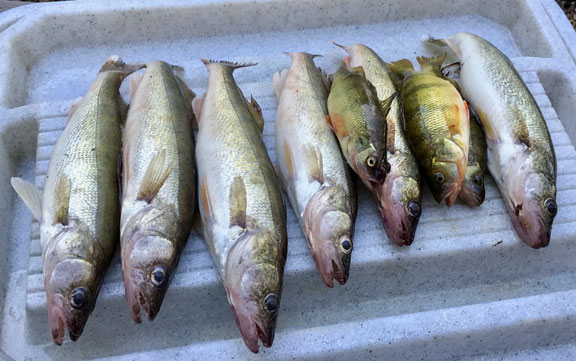
A two-person limit of walleyes and bonus perch taken pulling spinners/nightcrawlers over the weeds.
Speaking of weeds, this is the second area to look for perch. You can either find a good weedbed and fish the holes for perch, The trouble is there are lots of weedbeds on the lake. So, once again you can go on search mode fishing for walleyes. Now, you want to go pretty fast (1.5+ mph) with a tiny weight and a spinner/nightcrawler rig right over the weeds. This is more of a reactionary bite, and you can expect to catch a range of fish: walleyes, northern pike, bass, bluegills and crappies. Plus, you will most likely get a lot of perch bites. This method helps cover more ground to more quickly find the fish.
Both of these options are designed to help you find the schools of perch much more quickly. Once you find the school, drop anchor and fish. I use my Minnkota Ultera trolling motor and hit spotlock to hold the boat in place. If it is a really windy day, there are obviously certain parts of the lake I find I cannot fish because of the waves.
With these ideas in mind, let’s look at presentations.
Tackle options
Slip bobber or straight line? These are the two options. A slip bobber lets you get away from the boat and the waves will move the bobber, which often triggers strikes. Set the slip bobber stop so that the bait is 6-12” off the bottom. I will either use a plain hook and splitshot, a mini jig, 1/32-ounce Clam Drop or Dingle Drop tungsten or Shucks Jigger Minnow. Bait options include silver wigglers, wax worms, meal worms or minnows. All will work, but it changes day by day. Minnows are kind of hit and miss, but on certain days, they are all that the perch will bite. Plus, the minnows help keep the smaller perch away.
I prefer to straight line right over the side of the boat. I simply like to feel the bite, and I can raise and lower the bait to adjust with the school of perch. Since it is legal to use two lines (three if you buy the permit for the extra line), I will start off with two different baits, say a yellow/white mini jig and a green/gold Shucks Jigger Minnow. If one gets hotter than the other, I will then put two of the same lures/baits down. If it’s slow, I will go to a minnow or a Droop jig with wigglers. You know the drill.
A presentation I really like is to drop the bait to the bottom, raise it up a few inches and then drop it down again. ..and then let it just sit a few inches off the bottom, followed by a subtle jiggle, jiggle, jiggle…then repeat the process again. Some call it pounding the bottom. This will sometimes entice the perch to my bait. I think it really triggers the perch to bite.
If things slow down or if I can’t get any bites, I will reel up and slowly motor away from my waypoint and see if the school has set up one way or another from the waypoint. If they appear on the screen, I will stop and work the school. If not, I will then move on to another waypoint.

